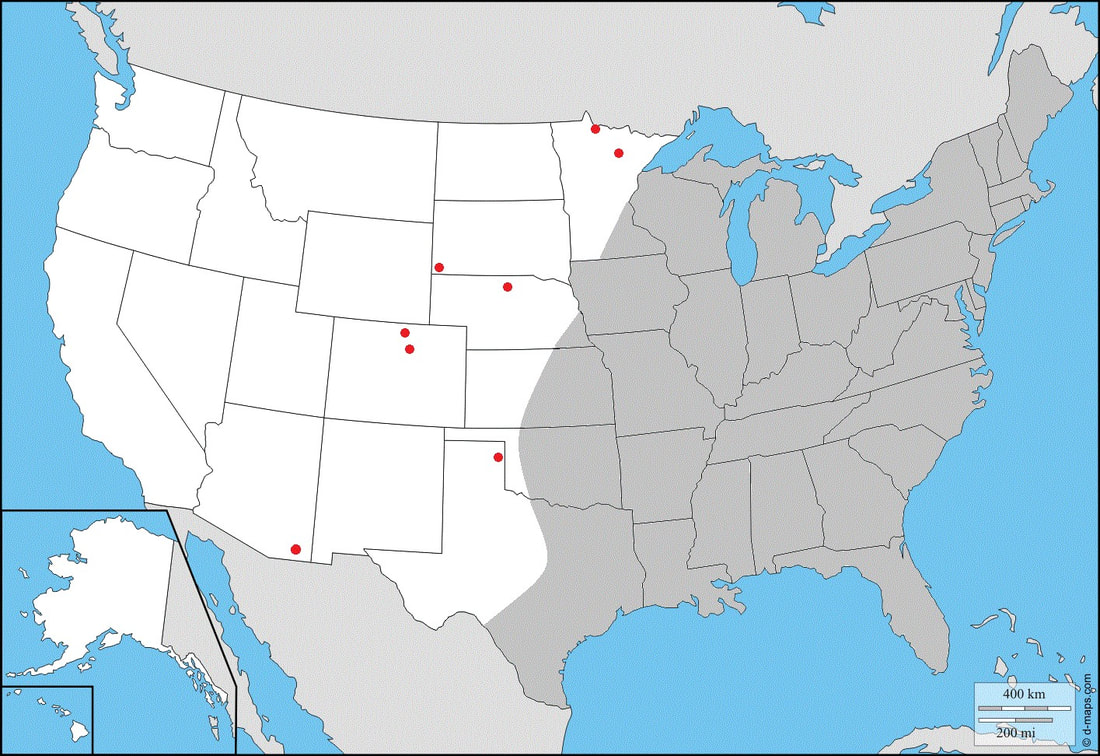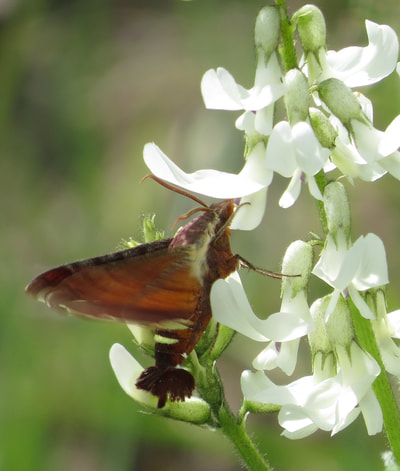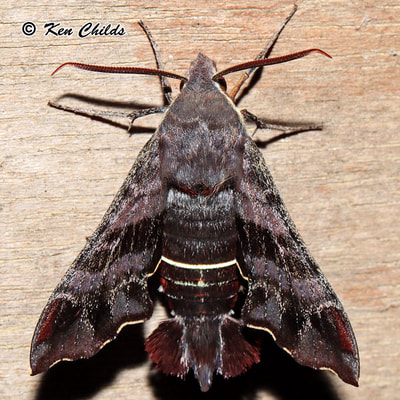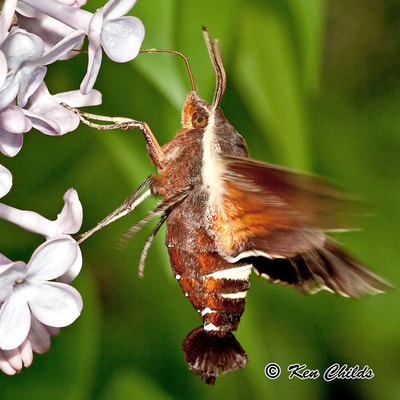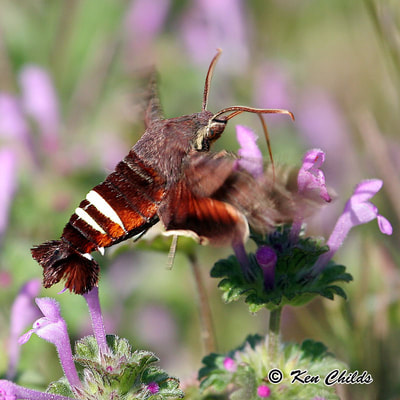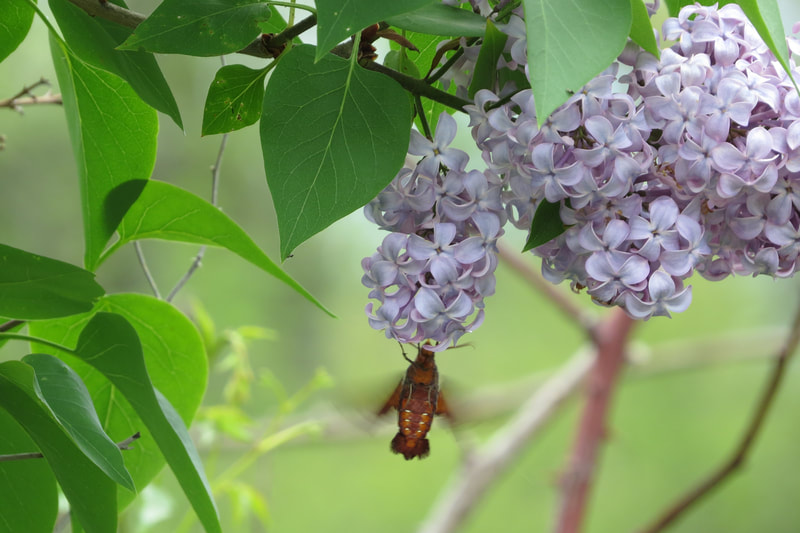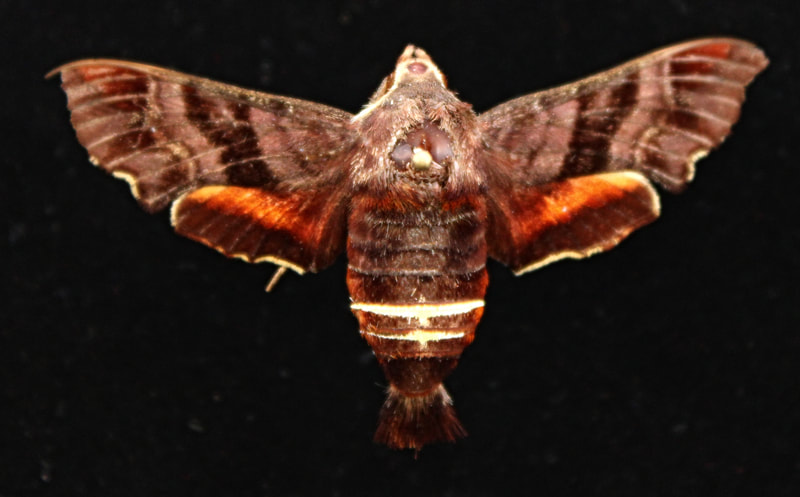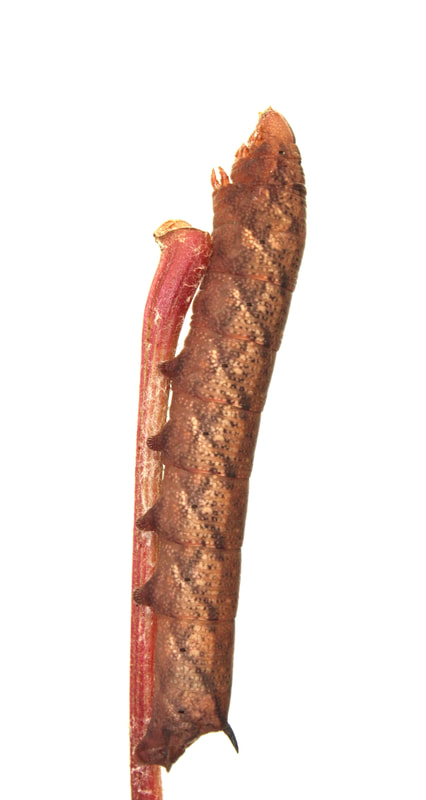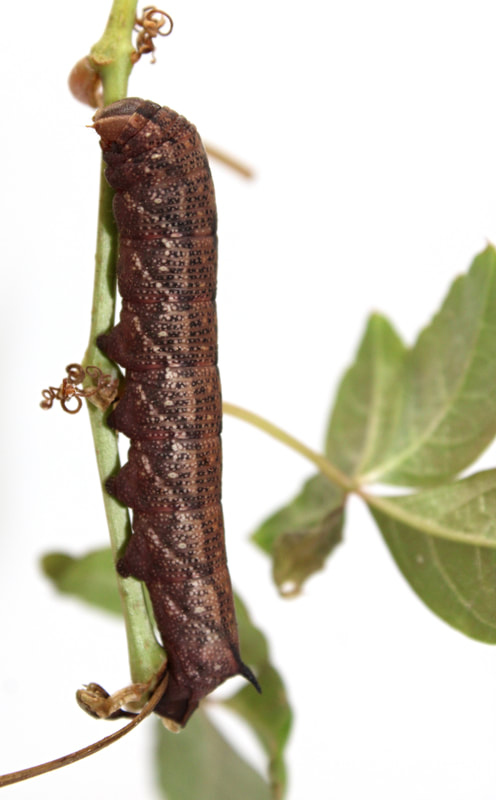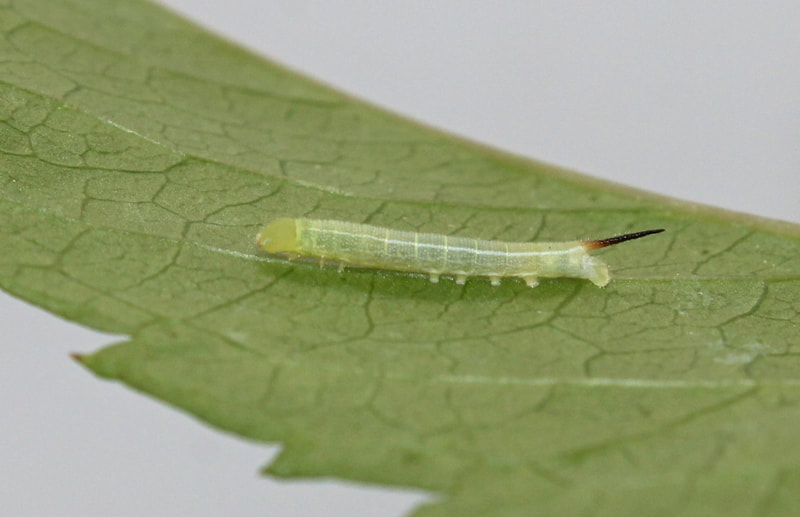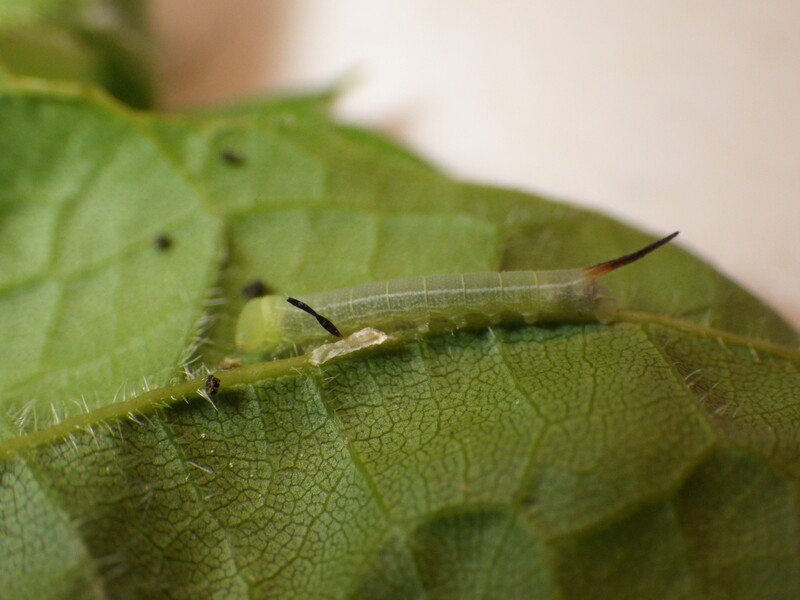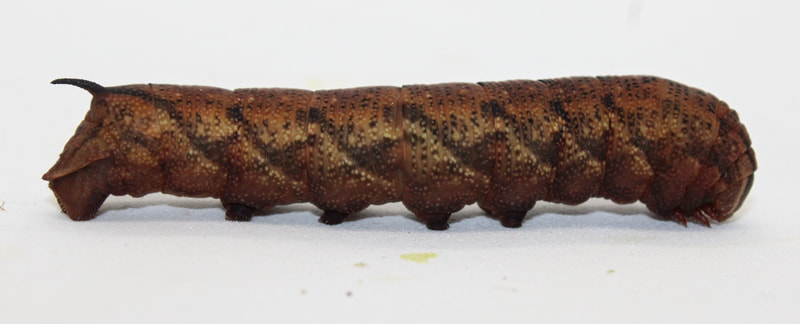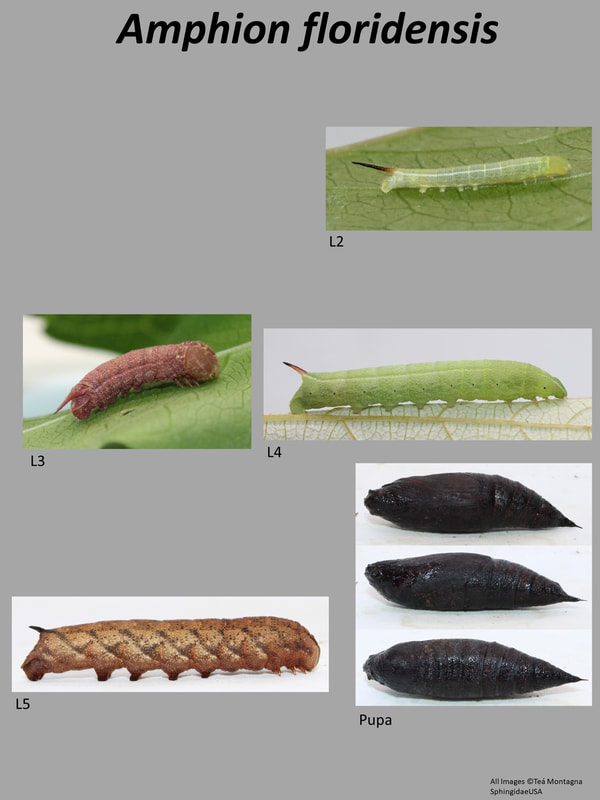|
Common Name: Nessus Sphinx
Ecology and Life History: Adults are on the wing from April to June in the Northeast, and throughout the growing season in the South. Since this moth is diurnal, light trapping is an ineffective method of surveying. Instead, visit flowers during the late afternoon or evening. This moth is likely attracted to bait.This moth is not sexually dimorphic, though females are slightly larger and rounder than males. Eggs are laid singly on the surface of hostplant leaves. They can be on the underside or topside of the leaf, showing little preference. Larvae are not gregarious and feed singly. Habitat and Searching for Larvae: Larvae are found on Vitis and Parthenocissus primarily, but likely also accept Ampelopisis. Larvae can be found virtually anywhere on these vines. Vines trailing along the ground can yield just as many larvae as a vine draped in the canopy of a tree. The are most active at night, sometimes retreating to the bark of the vine, or nearby tree during the day. Larvae can also be found resting on the undersides of leaves during the day. This moth can be found in a wide variety of habitats from urban backyards, to suburban neighborhoods, wetlands, disturbed areas, forest, and barrens. There is virtually no place this moth cannot be found as long as there is ample hostplant. Larvae can be found reliably from June to August in the Northeast. In the South, larvae are found from April/May through October, and likely year-round in the deep south.This species does not fluoresce under UV light but is easily located by searching hostplant vines at night with a regular flashlight. Rearing Notes: Eggs are not difficult to obtain. Place a moth in a large screen cage with a hostplant, feeding the moth twice daily. Eggs are laid sparingly the first day, and increasingly more the following days. These larvae accept most species of Vitis and Parthenocissus in captivity. It’s worth experimenting with Ampelopsis and other Vitaceacae. These larvae are not as hardy as other species. They are a little more sensitive and require a bit more care. Rearing is most easily achieved in a screen cage on a potted hostplant. This prevents any issues associated with humidity, and allows for slightly more crowding of larvae before it becomes an issue. If rearing in tupperware, only one larva per container is acceptable. This species should be kept clean, especially when rearing in tupperware, unclean conditions lead to disease and death rapidly. Sleeving is a good method for rearing this species, though sleeving things on vines is a tricky endeavor. A simpler method is to rear larvae in screen cages with a potted hostplant. Pupation is easily accomplished in any of the methods outlined on the General Information tab. Host plants: Click here to load this Caspio Cloud Database
Cloud Database by Caspio |
Adult Description: This is a small day-flying sphingid, often seen in the late afternoon nectaring at plants. The forewing length is 22-24mm (2). The forewings are brown with a distinct black band. The margin of the forewing is lined with white and is slightly curvy. The hindwings are black and red with a white fringe. The body of the moth has 2 very distinct cream lines between the last two segments. The tip of the abdomen has several lobes of scale tufts.
Larval Description: L4: The larva is brown-pink with two white-cream dorsal lines that run from the head capsule down the larva to the short brown caudal horn. L5: Larva is overall brown in color with various amounts of black patterning/streaking on the sides. The dorsal surface is generally darker than the sides. The head capsule is brown with two cream lines on the side and the middle area between the lines is darker than the rest of the head capsule. The horn is black and short, but not reduced to a nub. |
The gallery to the left contains photos of Amphion floridensis adults. If you have a photo that you would like to submit to us, please contact us.
The gallery to the right contains photos of Amphion floridensis larval and pupal stages. If you have a photo that you would like to submit to us, please contact us.
The gallery to the right contains photos of Amphion floridensis larval and pupal stages. If you have a photo that you would like to submit to us, please contact us.


